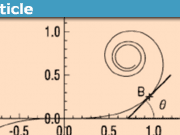When Vehicle Power Dictates Acceleration
One interesting problem when dealing with a vehicle of a certain mass is to determine what is required in order to get the maximum acceleration while going from one velocity to another.
Table of Contents
Statement
If a moving vehicle has an energy source that has a variable power output, the energy source must be set to its maximum power – during the entire velocity range – to ensure that the vehicle will get its maximum possible acceleration throughout that velocity range.
At any given velocity:
- The force applied to the vehicle dictates the acceleration it gets;
- The power applied to the vehicle dictates the force it gets;
- Therefore, the maximum possible acceleration of the vehicle depends solely on the maximum power available for the vehicle.
When it comes to accelerating a moving vehicle, only power tells the whole story.
Explanations
Force requirement
The first basic requirement is given by Newton’s second law: The force F required is equal to the mass m of the vehicle times the desired acceleration a of the vehicle. In simple terms: F = ma.
Power requirement
But since there is a force in motion, work is done, so there is a second requirement: The power P required is equal to the force F applied to the vehicle times the velocity v of the vehicle. In simple terms: P = Fv.
Putting it all together
If the two equations are combined together, we get P = mav. This means that as long as there are a mass m and velocity v (i.e. not equal to zero), the power P required is proportional to the desired acceleration a. At this point, we can ignore Newton’s second law because it is indirectly implied in this new equation, i.e if the power requirement is fulfilled, the force requirement is also necessarily fulfilled.
We have been talking about “desired acceleration” and “required power” until now but, in the real world, we are often given a power rating from an energy source and we take whatever acceleration we can get from it. In this case, the equation can be rewritten as a = P/(mv).
With this new equation, assuming power and mass are constants, we can see that the acceleration is a function of velocity. Particularly, as the velocity increases, the acceleration will decrease.
Since the mass m is a constraint given by the initial problem, it cannot be modified. The velocity v is also a constraint given by the initial problem, that is, it must be within the desired velocity range. So if one wants to increase the acceleration throughout the velocity range, one has no other choice but to increase the power available to the vehicle. If the power P is doubled, the acceleration a throughout the velocity range will also be doubled (remembering that the acceleration will still decrease as the velocity increases).
Power is power
Because of the law of conservation of energy, the power available to the vehicle is equal to the power given by the energy source powering the vehicle (not considering losses). The energy source can make its power with:
- a rotational system (P = torque times angular velocity);
- fluid power (P = pressure times volumetric flow rate);
- electricity (P = potential difference times current);
- combustion (P = fuel mass flow rate times fuel heating value);
or any other way one can think of, it does not matter.
Although, in any case, note that there may be some inefficiencies that will lead to some losses due to transformations between the energy source and the point of application on the vehicle. Obviously, only the power available at the point of application on the vehicle is relevant.
A common mistake
When considering the special case where a vehicle is powered by wheels of radius r, some people like to state they can link the acceleration directly to the wheel torque T, by using the relation F = T/r instead of the power equation we used. Combining this equation with Newton’s second law, they get T/r = ma and claim that it is a more direct way because the wheel radius r is constant (unlike the velocity v).
But where does that radius comes from? Are we allowed to choose any value? The equation F = T/r is subjected to the law of conservation of energy which extends to power, namely, Pin = Pout. With a rotating object, Pin = Tω (where ω is the object angular velocity) and Pout = Fv. This means that T/F = v/ω. So if T/F = r, then v/ω = r as well. The radius r implies a transformation where power is kept constant, and that cannot be ignored. Replacing r with the velocity ratio in the misleading equation will give Tω/v = ma. Thus we get back to our original equation: P = mav.
The introduction of the wheel radius does not simplify the process, it just hides the important notion of conservation of energy. Even with this special case [1], there are no ways around it, one way or another, power will have to be considered because velocity must be considered when accelerating a moving vehicle.
[1] It is a special case because the force F doesn’t have to be the result of a rotational system, meaning there may not be any torque involved in powering the vehicle. (For example, when a horse is pulling a buggy.)
- Studied industrial design and auto mechanics;
- B. Eng., option Mechanical Engineering (Aerospace and Vehicle Systems).
- Enjoys old cars, fast motorcycles, web, programming, law, CAD and engineering physics.




Leave a Reply
Want to join the discussion?Feel free to contribute!